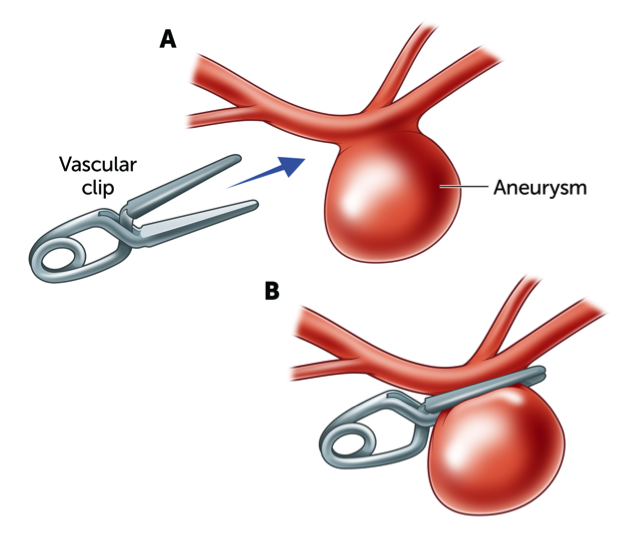Brain Aneurysm Surgery in Iran
How is cerebral aneurysm surgery performed?
An aneurysm is an enlargement or protrusion of one of the arteries in the body caused by a weakened artery wall.
It can affect anywhere in the body that has arteries, from the aortic artery that leaves the heart to the arteries that feed the brain, legs, or wall of the heart.
Cerebral aneurysm is one of the types of aneurysms that in this article we will discuss in detail the Brain Aneurysm Surgery in Iran, complications after cerebral aneurysm surgery as well as post-cerebral aneurysm care.
What is a cerebral aneurysm?
Intracranial aneurysm is a type of cerebrovascular disorder in which weakness in the wall of a cerebral artery or vein causes local dilation in the arteries.
Aneurysms are categorized in size and shape. Small aneurysms are less than 15 mm in diameter, large aneurysms are about 15 to 25 mm in diameter, giant aneurysms are about 25 to 50 mm in diameter, and super-giant aneurysms are more than 50 mm in diameter.
Cerebral aneurysms form when the walls of the cerebral arteries become weak and gradually form bumps, protrusions, and blisters due to high pressure inside the cerebral arteries. Cause cerebral hemorrhage.
High blood pressure, smoking and tobacco use increase the risk of developing cerebral aneurysms.
Types of aneurysms
- Symptoms of bleeding include: Very severe and sudden headache, usually without a history
- Drowsiness, confusion or loss of consciousness
- Change the level of consciousness
- Loss of consciousness
- Impaired vision
- Movement disorders in the limbs
- Cerebral palsy
- Vomiting and seizures
- Meningitis
- Come on
- Nausea
Before Brain Aneurysm Surgery in Iran
- Be sure to talk to your doctor if you are taking certain medications.
- Be sure to see your doctor if you drink alcohol or smoke.
- Avoid smoking.
- Ask your doctor about any medications you should not take.
After cerebral aneurysm surgery
- Patients with open brain surgery should stay in the hospital for 4 to 6 days after surgery for a checkup.
- If there is a problem, you should stay in the hospital for 1-2 weeks.
- The tips that the doctor recommends to the person should be followed in detail.
- If ruptured aneurysm surgery is successful, the chances of bleeding are very low.
Treatment of cerebral aneurysm
Medication
Treatment with open surgery – Brain Aneurysm Surgery in Iran
Endovascular treatment
In this case, a tube enters the artery. Endovascular coiling is a good option for treating aneurysms because there is no need to split the skull and it is generally done in a shorter time and the recovery period will be shorter.
The patient is also given less anesthetic. Recovery time will usually be two to four days.
Complications after cerebral aneurysm surgery
- Infections in the brain or parts of the brain such as the skull or scalp
- Difficulty paying attention to the things around you
- Vision problems (from blindness to lateral vision problems)
- Loss of balance or coordination
- Changes in behavior, speech, memory
- Reaction to drugs
- Causes respiratory problems
- Muscle weakness
- Speech problems
- Changes in behavior
- Confusion
- numb
- Weakness
- Convulsions
- numb
- Bleeding
- Brain swelling
- blood clotting
- stroke

Postoperative care of cerebral aneurysms
- Postoperative blood pressure of patients must be monitored regularly by the patient’s companions
- Smoking and Tobacco Delay Wound Healing
- Take medications such as blood pressure medications or other medications prescribed by your doctor in a timely manner.
- Patients or their companions should examine the surgical incision site daily for infection and wound healing.
- Changing the dressing must be done with the opinion of the treating physician until the wound has no discharge.
- If, after surgery, the patient develops postoperative complications of a cerebral aneurysm, such as mobility problems, he or she should continue the physiotherapy program on a regular basis so that the affected limbs can be moved and the patient can resume his or her daily activities.
- Use mobility aids such as walkers for patients with mobility problems.
- In patients with immobility and decreased level of consciousness, if possible, use wavy mattresses and change the position every 3 hours so that the patient does not suffer from bed sores.
- Patients with visual impairments should be careful to provide the equipment needed by these patients or to place it in areas already known to the patient.
الدکتور مهدي زينلی الزادة – استاذ جراحة المخ و قاعدة الجمجمة
Dr. Mehdi Zeinalizadeh – professor in brain surgery and cranial base
Brain Aneurysm Surgery in Iran

